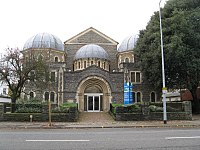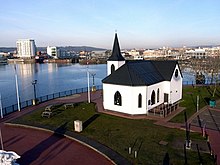
The history of what is now Wales begins with evidence of a Neanderthal presence from at least 230,000 years ago, while Homo sapiens arrived by about 31,000 BC. However, continuous habitation by modern humans dates from the period after the end of the last ice age around 9000 BC, and Wales has many remains from the Mesolithic, Neolithic, and Bronze Age. During the Iron Age the region, like all of Britain south of the Firth of Forth, the culture had become Celtic, with a common Brittonic language. The Romans, who began their conquest of Britain in AD 43, first campaigned in what is now northeast Wales in 48 against the Deceangli, and gained total control of the region with their defeat of the Ordovices in 79. The Romans departed from Britain in the 5th century, opening the door for the Anglo-Saxon settlement. Thereafter, the culture began to splinter into a number of kingdoms. The Welsh people formed with English encroachment that effectively separated them from the other surviving Brittonic-speaking peoples in the early middle ages.
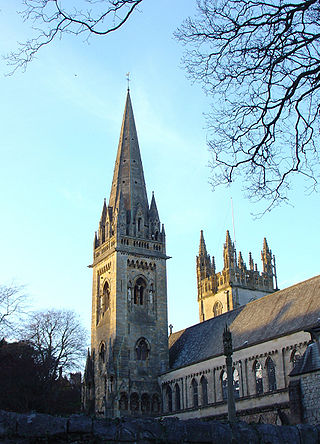
Llandaff is a district, community and coterminous electoral ward in the north of Cardiff, capital of Wales. It was incorporated into the city in 1922. It is the seat of the Bishop of Llandaff, whose diocese within the Church in Wales covers the most populous area of Wales.

William Williams, Pantycelyn, also known as William Williams, Williams Pantycelyn, and Pantycelyn, is generally seen as Wales's premier hymnist. He is also rated among the great literary figures of Wales, as a writer of poetry and prose. In religion he was among the leaders of the 18th-century Welsh Methodist revival, along with the evangelists Howell Harris and Daniel Rowland.

Nonconformists were Protestant Christians who did not "conform" to the governance and usages of the state church in England, and in Wales until 1914, the Church of England.
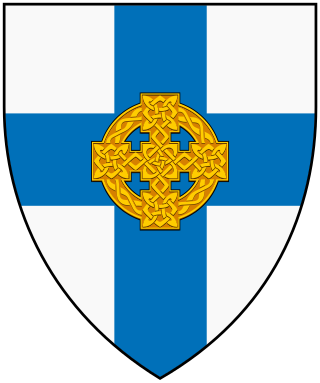
The Church in Wales is an Anglican church in Wales, composed of six dioceses.

British society is one of the most secularised in the world and in many surveys determining religious beliefs of the population agnosticism, nontheism, atheism, secular humanism, and non-affiliation are views shared by a majority of Britons. Historically, it was dominated for over 1,400 years by various forms of Christianity, which replaced preceding Romano-British religions, including Celtic and Anglo-Saxon paganism. Religious affiliations of United Kingdom citizens are recorded by regular surveys, the four major ones being the national decennial census, the Labour Force Survey, the British Social Attitudes survey and the European Social Survey.

The Welsh Church Act 1914 is an Act of Parliament under which the Church of England was separated and disestablished in Wales and Monmouthshire, leading to the creation of the Church in Wales. The Act had long been demanded by the Nonconformist community in Wales, which composed the majority of the population and which resented paying taxes to the Church of England. It was sponsored by the Liberal Party and opposed by the Conservative Party.
London has centres of worship for many faiths. According to the 2021 Census, the largest religious groupings are Christians (40.66%), followed by those of no religion (27.05%), Muslims (14.99%), no response (7%), Hindus (5.15%), Jews (1.65%), Sikhs (1.64%), Buddhists (1.0%), and others (0.9%).
Christianity is the largest religion in Northern Ireland. In the 2021 census, 79.7% of the Northern Irish population identified as Christians: Catholic (42.3%); Presbyterian (16.6%); Church of Ireland (11.5%); Methodist (2.4%); Other Christian (6.9%). Meanwhile, 1.3% of the population belonged to other religions, 17.4% stated they were non-religious and 1.5% did not state a religious or non-religious identity. The Catholic Church has seen a small growth in adherents, while the other recorded Christian groups have seen a small decrease.

Christianity is the largest religion in England, with the Church of England being the nation's established state church, whose supreme governor is the monarch. Other Christian traditions in England include Roman Catholicism, Methodism, Presbyterianism, Mormonism, and the Baptists. After Christianity, the religions with the most adherents are Islam, Hinduism, Sikhism, Judaism, Buddhism, modern paganism, and the Bahá'í Faith. There are also organisations promoting irreligion, including humanism and atheism. According to the 2021 census, Shamanism is the fastest growing religion in England.
Protestantism is the largest religious demographic in the United Kingdom.
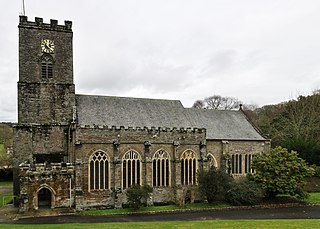
Christianity in Cornwall began in the 4th or 5th century AD when Western Christianity was introduced as in the rest of Roman Britain. Over time it became the official religion, superseding previous Celtic and Roman practices. Early Christianity in Cornwall was spread largely by the saints, including Saint Piran, the patron of the county. Cornwall, like other parts of Britain, is sometimes associated with the distinct collection of practices known as Celtic Christianity but was always in communion with the wider Catholic Church. The Cornish saints are commemorated in legends, churches and placenames.
Representing 43.6% of the Welsh population in 2021, Christianity is the largest religion in Wales. Wales has a strong tradition of nonconformism, particularly Methodism. From 1534 until 1920 the established church was the Church of England, but this was disestablished in Wales in 1920, becoming the still Anglican but self-governing Church in Wales.

Christianity in West Bengal, India, is a minority religion. According to the 2011 census of India, there were 658,618 Christians in West Bengal, or 0.72% of the population. Although Mother Teresa worked in Kolkata (Calcutta), Christianity is a minority religion in Kolkata as well. West Bengal has the highest number of Bengali Christians. Bengali Christians have been established since the 16th century with the advent of the Portuguese in Bengal. Later in the 19th and 20th centuries, many upper-class Bengalis converted to Christianity during the Bengali Renaissance under British rule, including Krishna Mohan Banerjee, Michael Madhusudan Dutt, Anil Kumar Gain, and Gnanendramohan Tagore. Aurobindo Nath Mukherjee was the first Indian to be Anglican Bishop of Calcutta.
John Griffith was among the most prominent clergymen in industrial south Wales during the second half of the nineteenth century. He was rector of Aberdare from 1846 until 1859. From 1859 until his death in 1885 he was vicar of Merthyr Tydfil where he proved a strong supporter of workers' rights and, by the end of his life a supporter of the disestablishment of the Church of England in Wales. This reflected the way in which he gradually abandoned the strong Tory principles that he espoused at the beginning of his career at Aberdare. He died on 24 April 1885.
Nonconformity was a major religious movement in Wales from the 18th to the 20th centuries. The Welsh Methodist revival of the 18th century was one of the most significant religious and social movements in the modern history of Wales. The revival began within the Church of England in Wales, partly as a reaction to the neglect generally felt in Wales at the hands of absentee bishops and clergy. For two generations from the 1730s onwards the main Methodist leaders such as Howell Harris, Daniel Rowland and William Williams Pantycelyn remained within the Church of England, but the Welsh revival differed from the Methodist revival in England in that its theology was Calvinist rather than Arminian. Methodists in Wales gradually built up their own networks, structures, and meeting houses, which led, at the instigation of Thomas Charles, to the secession of 1811 and the formal establishment of the Calvinistic Methodist Presbyterian Church of Wales in 1823.
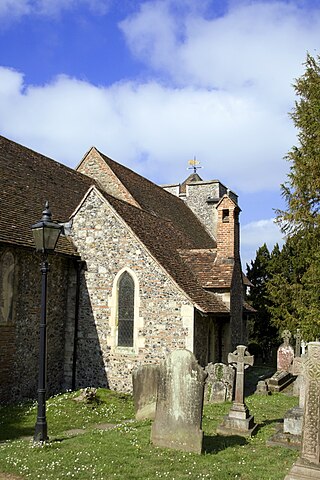
The history of Christianity in Britain covers the religious organisations, policies, theology and popular religiosity since ancient history.
Arthur Macdonald "Donald" Allchin, published as A. M. Allchin, was a British Anglican priest and theologian. He was librarian of Pusey House, Oxford, from 1960 to 1969, a residentiary canon of Canterbury Cathedral from 1973 to 1987, and programme director of the St Theosevia Centre for Christian Spirituality in Oxford from 1987 to 1996.

The early modern period in Wales is the period in the history of Wales from 1500 to 1800.



